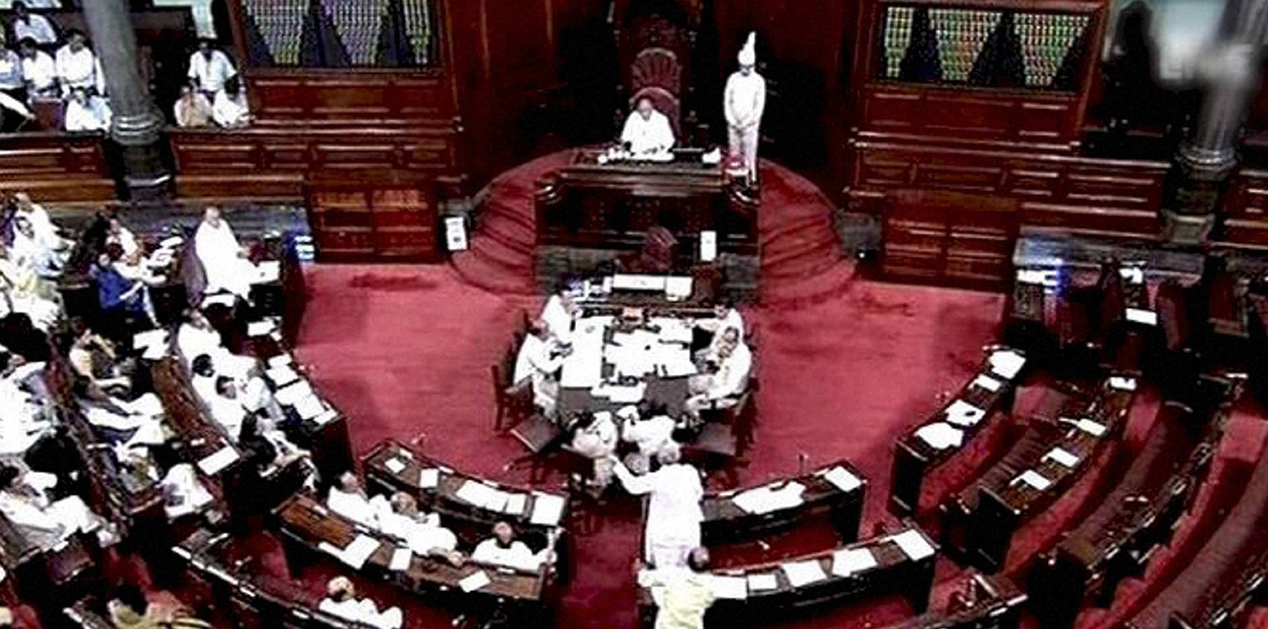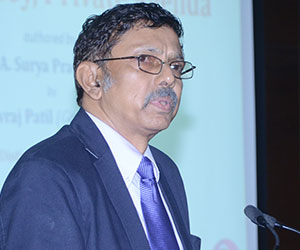The National Democratic Alliance (NDA) government is expected to improve its numbers in the Rajya Sabha after the present round of biennial elections, but it is still some distance away from gaining a majority in this House. Which means that the ruling coalition, which is around 50 short of the mid-way mark in the 245-member House, will still be hostage to the obstructionist tactics of a hostile opposition.
The Modi Government is not the first government to cope with the disjunction in numbers in the two Houses. Except Jawaharlal Nehru and Lal Bahadur Shastri, who enjoyed a clear majority in the Upper House throughout their tenures, all other governments have had to deal with difficult situations brought about by a shortage of numbers in this House.
However, among political parties, the Congress Party is the only one which has enjoyed a comfortable majority in the Rajya Sabha, either on its own or with its allies for much of its tenure. After the two Houses were constituted in 1952, the Congress secured a comfortable majority in the Rajya Sabha. To begin with, it had 146 members in a House of 216. Later its strength went up to 186. Prime Minister Indira Gandhi too could bank on a majority when she entered office. She fell short of a majority for about three years after the great Congress split in 1969. However, in the election to state assemblies in 1972, her party trounced the opposition in a majority of the states. Consequently, it got a good crop of seats in the biennial elections to the Rajya Sabha, which ensured a clear majority in that House. Prime Minister Rajiv Gandhi also enjoyed a comfortable majority in the Upper House for most part of his tenure from 1984-89.
The Bharatiya Janata Party (BJP) has not been so lucky. When the coalition headed by the party ruled India between 1998-2004, it had just 45 MPs in this House and around 80 from the entire coalition. This number rose to about 90 in the final year of the Atal Behari Vajpayee government. Narendra Modi too has begun his innings with 47 BJP MPs in this House and has the support of about 30 others from the coalition.
So, what does one do when a party or coalition secures a decisive mandate in a Lok Sabha election, but finds that all its plans are stymied in the Rajya Sabha where it is in a hopeless minority? Going by the debates in the Constituent Assembly, it is clear that the constitution-makers did not anticipate that the Upper House could become an impediment to law-making and governance. They also did not visualize a situation where in some decades after the Constitution came into being, the country’s polity would become so fractured as to squeeze and marginalize national parties and nurture dozens of regional, denominational and caste-based parties in the states, leading to representation of a plethora of these parties in the Upper House. In 1952, there were just six recognised political parties in the Rajya Sabha. Today, there are 27.
The debates show that despite opposition in some quarters, most members of the Constituent Assembly favoured a second chamber because they felt that erudite members of this House, who are not trapped in the political thicket like the members of the Lok Sabha, would view legislation more dispassionately and thus provide critical value addition to law making. That is why they ensured that both Houses stood on an equal footing when it came to law-making except in regard to money bills. Here, the constitution-makers made it clear that it was entirely up to the Lok Sabha to accept or reject the advice of the Rajya Sabha. In other words, if there was disagreement between the two Houses on a money bill, the Lok Sabha’s view would prevail.
In respect of all other bills, if the Upper House disagreed, the only way out was to call a joint sitting of the two Houses to consider a disputed legislative measure. But, even this provision is not available in respect of constitution amendment bills. Any such bill will require the approval of two-thirds of the members present and voting, in both Houses. With these safeguards, constitution-makers felt they had done a good balancing act.
In the Constituent Assembly, there was stiff opposition to the constitution of an Upper House. One member, Mohd.Tahir said the idea of an Upper House was thought of by the British just to impede the work of a democratically elected House. He said it would be an imperialist tool meant to check the other House. Prof.Shibban Lal Saxena was even more vocal. He said in no country had the Upper House helped progress. “It has always acted as a sort of hindrance to quick progress”. It was not a good idea because India needed to catch up with the world and had to implement its programmes with rapidity in the next five to ten years. In this scenario, the Upper House would be “a clog in the wheel of progress”.
The most vociferous supporter of the idea of a second chamber was N.Gopalaswami Ayyangar, who had moved the resolution in this regard. He said, the second chamber would ensure “dignified debates” and it would “delay legislation” until “the passions of the moment have subsided”. He said the second chamber is “an instrument by which we delay action” and also give “seasoned people” who would bring their learning (which we do not ordinarily associate with the House of the People), to the House.
He however assured the skeptics that he and his colleagues in the committee which drafted this provision had taken care to ensure that the Upper House “does not prove a clog either to legislation or administration”. In other words, by stripping the second chamber of the power to veto a money bill, the constitution-makers felt that they had struck a balance and that the Upper House would not be a hindrance to governance. But, just look at the composition of the House now. Does it comprise of only ‘seasoned people” and learned men and women? Again, considering the way the House functions now and the legitimate complaint of the government elected by the people that it stalls legislation, was it a good idea to have a House that would ‘delay action”?
What would our constitution-makers say about the scheme they devised if they saw how the Rajya Sabha function today?
Published Date: 8th June 2016, Image Source: http://indianexpress.com
(Disclaimer: The views and opinions expressed in this article are those of the author and do not necessarily reflect the official policy or position of the Vivekananda International Foundation)











Post new comment